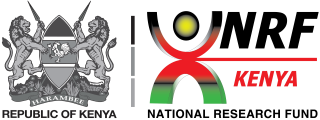Publication: Seasonal Vegetation Response to Climate Variability on Land use Land Cover Changes using In-Situ and Satellite Imagery Observation Data for Semi-Arid Maasai Mara National Reserve Rangeland Ecosystem, Kenya
| dc.contributor.author | Kapkwang, Charles | |
| dc.contributor.author | Onyando, Japheth | |
| dc.contributor.author | Kundu, Peter | |
| dc.contributor.author | Hoedjes, Joost | |
| dc.date.accessioned | 2024-02-27T09:44:24Z | |
| dc.date.available | 2024-02-27T09:44:24Z | |
| dc.date.issued | 2021-11-15 | |
| dc.description.abstract | Monitoring vegetation response through enhanced change detection by remote sensing and geographical information systems has tremendously improved real time information on surface features. Over the last few decades biomass monitoring at large scale has been made possible from information and metrics derived from satellite sensors. Maasai Mara National Reserve has been utilized in many decades as Kenyan natural grassland for wildlife grazing without periodic assessment of biomass production as affected by impact of climate variability yet it’s a tourism hub and one Kenyan economic contributor. This research evaluates the use of high spatial resolution satellite imagery such as the Moderate Resolution Imaging Spectro-radiometer or the Project for On-Board Autonomy–Vegetation and latest SENTINEL-2 for deriving the Normalized Difference Vegetation Index values in relations to in-situ measurements of biomass production between 2009 and 2019 in Mara, Kenya. Area frame sampling of biomass per unit area in Kgha-1clipped from 50cm by 50cm quadrats were used in destructive sampling. The reserve grassland area coverage was estimated to be 717.203km2 (46.75%) where the in-situ total above ground grass biomass projected in dry season was 35.094 tonha-1. This was approximated as 2,516,952.208 tonnes per the season reserve cover while in wet season, 42.123 tonha-1 was approximated as 3,021,074.197 tonnes. The error matrices developed to assess the accuracies of the ecosystem classification indicated values that ranged between 80-100% and 87.5-100% for producer’s and user’s accuracy respectively. 3 out of 7 satellite imagery maps (2017, 2018, and 2019) were assessed for accuracy using reference data collected during fieldwork in 2018 and 2019 in ecosystem. The overall accuracy was 95.22% with Kappa index of 0.94 for 14 land cover classes shown in table 7. From the findings, potential factors influencing vegetation growth in different climatic regions are varied and complex. It can be noted that climate variability influence vegetation response in spatial scale to supply sustainable quality vegetation/pasture for wildlife feeds and ecosystem development. Vegetation mapping and monitoring of ecosystem behavior help stakeholders with information of vegetation characteristics Decision policy formulation and wildlife planning. | |
| dc.description.sponsorship | N/A | |
| dc.identifier.citation | Kapkwang, C. C., O. Onyando, J., M. Kundu, P., & Hoedjes, J. (2021). Seasonal Vegetation Response to Climate Variability on Land use Land Cover Changes using In-Situ and Satellite Imagery Observation Data for Semi-Arid Maasai Mara National Reserve Rangeland Ecosystem, Kenya. Journal of Engineering Research and Reports, 21(5), 1–27. https://doi.org/10.9734/jerr/2021/v21i517461 | |
| dc.identifier.uri | https://doi.org/10.9734/jerr/2021/v21i517461 | |
| dc.identifier.uri | https://repository.nrf.go.ke/handle/123456789/596 | |
| dc.language.iso | en | |
| dc.publisher | Journal of Engineering Research and Reports | |
| dc.subject | Egerton University | |
| dc.title | Seasonal Vegetation Response to Climate Variability on Land use Land Cover Changes using In-Situ and Satellite Imagery Observation Data for Semi-Arid Maasai Mara National Reserve Rangeland Ecosystem, Kenya | |
| dc.type | Article | |
| dspace.entity.type | Publication |
Files
License bundle
1 - 1 of 1
No Thumbnail Available
- Name:
- license.txt
- Size:
- 1.62 KB
- Format:
- Item-specific license agreed to upon submission
- Description:
